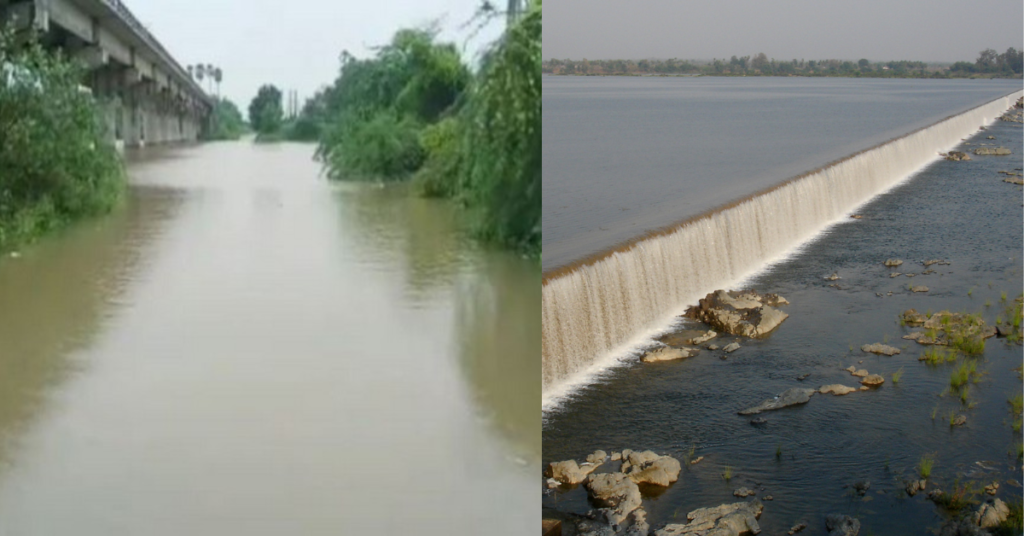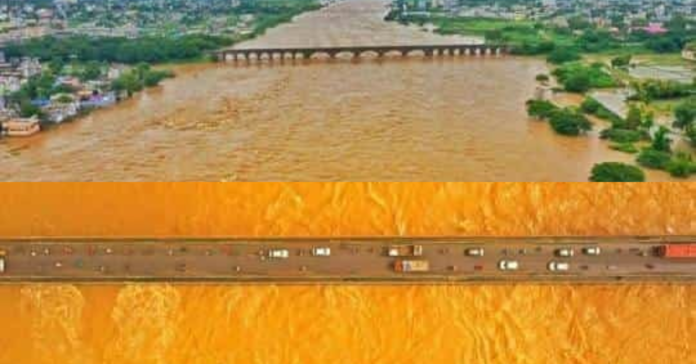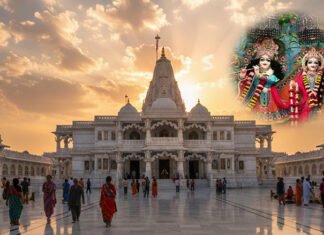The Munneru River is an important waterway in southern India, flowing through the states of Telangana and Andhra Pradesh. It is a tributary of the larger Krishna River and plays a crucial role in supporting agriculture, providing drinking water, and maintaining the ecological balance in the regions it flows through.

Origin and Path of Munneru River
The Munneru River originates in the Warangal district of Telangana. The region is known for its natural beauty and historical significance. It adds to its geographical importance. The river begins its journey in the Warangal district’s hilly terrains and makes its way through various landscapes. Providing water and life to the regions it passes through.
After originating in Warangal, the River flows southwest, passing through the districts of Khammam in Telangana and Krishna in Andhra Pradesh. It finally merges with the Krishna River, one of India’s major rivers. This journey through these regions makes it a significant tributary of the Krishna River, contributing to the water resources of both states.
Also Read: Exploring the Rich Heritage of Nelakondapally, Khammam, Telangana
Flow of the Munneru River

The Munneru River flows through several key areas before joining the Krishna River. Here’s a simple breakdown of its course:
- Dornakal Eru to Khammam: The river starts its journey through Dornakal Eru and flows towards the Kamanchkal area. It subsequently enters Khammam’s Danavaigudam suburb, where a minor dam is being constructed to capture water. This makes the River an important water source for the city of Khammam.
- Through Khammam Suburbs: As it continues, the river passes through several suburbs of Khammam city. Including ManchiKanti Nagar, Kalavoddu, Moti Nagar, Prakash Nagar, and Dhamsalampuram. These areas rely on the river for their water needs.
- Towards Krishna District: After Khammam, the River reaches the villages of Chinna Mandava and Lingala in Krishna District.
- Final Stretch: The river then flows into Penuganchiprolu and Keesara villages. Before emptying into the Krishna River in Eturu hamlet near Nandigama, right downstream of the Pulichintala Dam.
- Muniyeru Barrage: Near Jaggayyapeta, the Muniyeru barrage, built in 1898, diverts water from the river to irrigate 6,650 hectares of farmland, making it a crucial irrigation resource for the region.
Also Read: The Beauty of Kinnerasani Wildlife Sanctuary A Complete Guide
Bridges Over the Munneru River
The River flowing through Khammam and Krishna districts is crossed by several important bridges that facilitate transportation and manage the river’s water flow.
Bridges in Khammam

- Water Bridge: A special bridge has been constructed over the Munneru River to allow the flow of water from the Nagarjunsagar reservoir to Khammam City and its surrounding areas. This infrastructure is crucial for maintaining water supply and supporting irrigation.
- Old Bridge: An older bridge in Khammam City serves regular vehicles, providing a vital connection within the city.
- New Bridge: A newer bridge in Khammam is used for big vehicles, resulting in smoother traffic flow and less congestion.
- Upcoming Bridge: Construction has begun on a new bridge that will connect Nelakondapalli and Kodad to Khammam via Prakashnagar. This bridge aims to shorten travel distances and improve the flow of the region.
Bridges in Krishna District

- Lingala Village: There is a road and railway bridge at Lingala Village, which facilitates both road and rail transport across the river.
- Penuganchiprolu: A road bridge in Penuganchiprolu provides essential connectivity for local transportation.
- Nandigama: A bridge on National Highway 9 at Nandigama crosses the Munneru River, supporting major road travel in the region.
Importance of the Munneru River
Munneru River

- Water Source: The Munneru River is a vital source of water for the city of Khammam and the surrounding areas. It provides water for domestic use, agriculture, and various other purposes, making it an essential resource for the local population.
- Irrigation: The river plays a critical role in irrigation. The Muniyeru Barrage, constructed in 1898, is a significant infrastructure project on the Munneru River. This barrage helps in harnessing the river’s water for irrigating over 6,650 hectares of agricultural land. The availability of water from the Munneru River ensures that farmers in the region can cultivate crops even during dry seasons, thereby sustaining the agricultural economy.
- Ecological Balance: The Munneru River supports a diverse range of aquatic life, contributing to the ecological balance of the region. The river’s waters provide a habitat for various fish species and other aquatic organisms. The surrounding areas, with their patches of greenery, further enhance the biodiversity supported by the river.
- Mythological Significance: The Munneru River holds a special place in local mythology. According to legend, the river is named after Rishi Maudgalya, a revered sage who is said to have created the river with his spiritual powers. This mythological connection adds cultural and religious significance to the river, making it a revered natural resource in the region.
Also Read: Everything You Need to Know About Sri Sita Ramachandra Swamy Temple Bhadrachalam”
Challenges Facing the Munneru River

- Pollution: The River faces significant pollution challenges, a common issue for many rivers in India. Industrial effluents, domestic waste, and agricultural runoff are major sources of pollution. These pollutants degrade the water quality, making it unsafe for drinking and harming the aquatic ecosystem.
- Water Scarcity: The flow of the Munneru River can be highly variable, especially during dry seasons. This erratic flow leads to water scarcity, which poses a significant challenge for the communities that rely on the river for drinking water and irrigation. Managing the river’s water resources efficiently is crucial to addressing this issue.
- Sedimentation: The river bed of the Munneru is prone to sedimentation, where silt and debris accumulate over time. This sedimentation reduces the river’s water-carrying capacity, leading to a higher risk of flooding during the rainy season and decreasing its effectiveness as a water source during dry periods. Regular dredging and other sediment management practices are necessary to maintain the river’s flow.
Tourism and Attractions
The Munneru River and its surroundings offer several attractions for tourists, including:
- Khammam Fort: A historic fort located near the river, offering panoramic views and a glimpse into the region’s rich history.
- Temples: Several ancient temples along the riverbanks, including those dedicated to Lord Shiva and other deities, attract pilgrims and tourists alike.
- Nature Walks: The river’s scenic banks are ideal for nature walks, bird watching, and photography, providing a serene escape from urban life.
Conclusion
The Munneru River is more than just a tributary of the Krishna River; it is a lifeline for the regions it passes through. From supporting agriculture and providing drinking water to maintaining ecological balance and holding cultural significance, the Munneru River is indispensable to the people and environment of Telangana and Andhra Pradesh. However, the river faces several challenges, including pollution, water scarcity, and sedimentation, which must be addressed to ensure its sustainability for future generations.
Frequently Asked Questions(FAQs)
A: The Munneru River is a tributary of the Krishna River, flowing through Telangana and Andhra Pradesh.
A: The Munneru River merges with the Krishna River.
A: The Muniyeru Barrage, built in 1898, regulates the Munneru River’s flow for irrigation purposes.
A: Pollution, water scarcity, and sedimentation are the main challenges.
A: It provides essential irrigation through the Muniyeru Barrage, supporting over 6,650 hectares of farmland.











